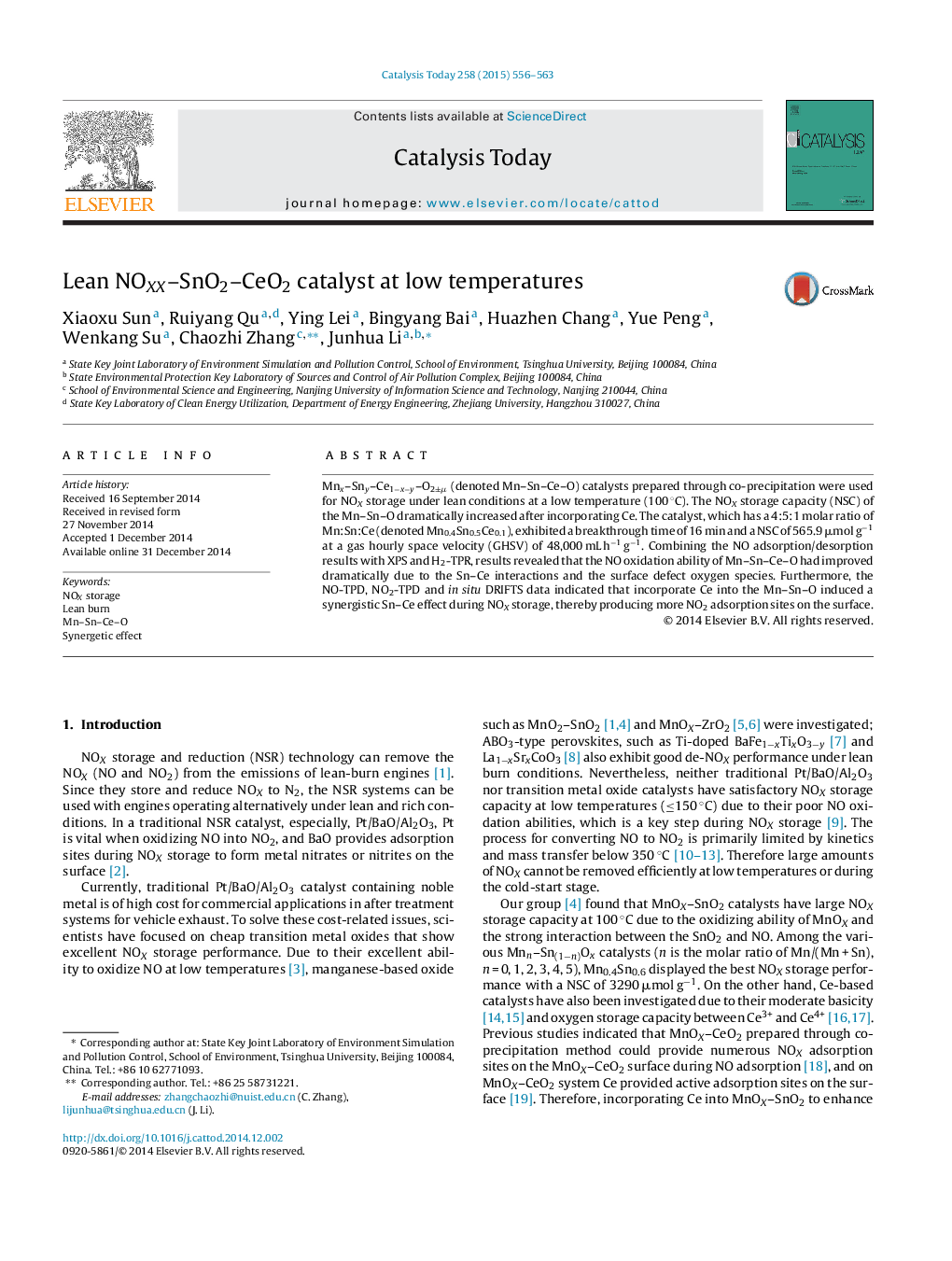| Article ID | Journal | Published Year | Pages | File Type |
|---|---|---|---|---|
| 53632 | Catalysis Today | 2015 | 8 Pages |
•The Mn–Sn–Ce–O catalysts showed excellent NOX storage capacities at 100 °C.•Defect oxygen was vital to oxidize NO during NOX storage, and incorporating Ce improved NO oxidation ability.•The synergetic effect between Sn and Ce increased the amount of NO2 adsorption sites on the surface.•The formation of the intermediate product NO−-Ce3+ prompted the NO adsorption on Mn–Sn–Ce–O catalysts.
Mnx–Sny–Ce1−x−y–O2±μ (denoted Mn–Sn–Ce–O) catalysts prepared through co-precipitation were used for NOX storage under lean conditions at a low temperature (100 °C). The NOX storage capacity (NSC) of the Mn–Sn–O dramatically increased after incorporating Ce. The catalyst, which has a 4:5:1 molar ratio of Mn:Sn:Ce (denoted Mn0.4Sn0.5Ce0.1), exhibited a breakthrough time of 16 min and a NSC of 565.9 μmol g−1 at a gas hourly space velocity (GHSV) of 48,000 mL h−1 g−1. Combining the NO adsorption/desorption results with XPS and H2-TPR, results revealed that the NO oxidation ability of Mn–Sn–Ce–O had improved dramatically due to the Sn–Ce interactions and the surface defect oxygen species. Furthermore, the NO-TPD, NO2-TPD and in situ DRIFTS data indicated that incorporate Ce into the Mn–Sn–O induced a synergistic Sn–Ce effect during NOX storage, thereby producing more NO2 adsorption sites on the surface.
Graphical abstractA novel Mn–Sn–Ce–O metal oxide catalyst showed excellent NOX trap performance at 100 °C. Compared with binary metal oxides, Mn–Sn–Ce–O catalysts performed better NO oxidation and NO2 adsorption ability because of the Ce incorporation.Figure optionsDownload full-size imageDownload high-quality image (138 K)Download as PowerPoint slide
